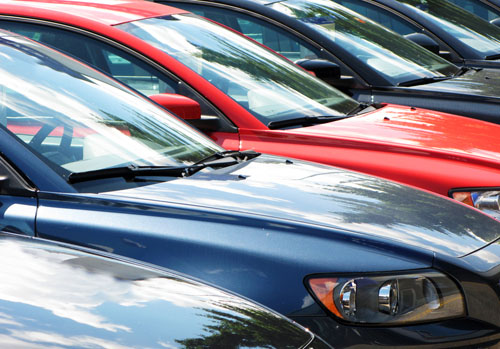Car dealers have been focused on getting more cars onto their lots for nearly two years, despite a severe inventory shortage. Some are concerned about how quickly they will be able to remove them.
Since mid-2021, dealerships’ limited selection has resulted in a backlog of consumer demand. Because of this trend, most vehicles arriving from the factory are presold at many dealerships, often at prices well above the manufacturer’s suggested retail price.
However, as new-vehicle inventories are gradually replenished, some dealers believe that an uncertain economic outlook and higher interest rates are beginning to dampen demand.
“There is pent-up demand from people who have been in the market for six or nine months and haven’t been able to find a car,” said Peter Lanzavecchia, a Hyundai, Genesis, GMC, and other brand dealer in Marlton, N.J. “But it will dry up.” We are extremely concerned about 2023.”
A quarterly survey of more than 1,000 U.S. dealers, conducted from Oct. 25 to Nov. 7, and released this week by Cox Automotive, reveals that their outlook for car sales is the most pessimistic since the research firm began the poll in early 2017.
The majority of dealers who responded see the current car sales market as weak. Overall, the economy and interest rates were cited as the top two factors impeding their business, with a lack of inventory ranking third. According to the surveys, limited inventory has been their top concern since mid-2021.
“This incredible period that has produced record profits for many dealers is quickly turning into a more worrying period,” said Jonathan Smoke, Cox Automotive’s chief economist.
The findings reflect the automotive industry’s uncertain times. Signs of a possible recession usually jolt the cyclical auto industry, which suffers greatly in a downturn.
Despite the bleak economic outlook, the market dynamics that have driven strong profits for dealers and automakers over the last two years have largely held: Vehicle supply is relatively scarce, and there is a backlog of consumers looking for a car and willing to pay top dollar. As a result, some auto executives believe the market is still healthy.
“There’s probably some pent-up demand out there that will work its way through in 2023,” General Motors Co. finance chief Paul Jacobson said last month. He anticipates that prices will fall slightly next year as economic factors deter some buyers.
Rising interest rates, according to dealers and automotive executives, are one of the most significant threats to customer demand. In the Cox survey, roughly half of the dealers who responded cited interest rates as a problem, compared to only 3% a year earlier.
Meanwhile, a decrease in the value of trade-in vehicles has begun to erode new-vehicle demand, according to Mr. Lanzavecchia. As used-car prices fall from all-time highs, new-car buyers who trade in vehicles don’t have as much to offset the purchase price, he claims. Manheim’s index of wholesale used-vehicle prices fell 14% in November from the previous year.
However, consumer prices for new vehicles have held up better. Even as automakers increase output as the semiconductor shortage and other supply disruptions ease, vehicle inventories remain low, keeping prices high.
According to Wards Intelligence, the number of vehicles on dealership lots or on their way to stores increased 57% year on year in November, to 1.6 million. Nonetheless, that level is roughly one-third lower than the historical norm.
Automobile executives have stated that they are unlikely to increase consumer incentives, which have remained near historic lows, until vehicle availability improves. According to research firm J.D. Power, the average new-vehicle price in November was $45,872, a record for the month and only a few hundred dollars lower than the record-high set in July.
Toyota Motor Corp.’s North America business executive vice president Jack Hollis said the company’s U.S. dealers have the equivalent of about four days’ worth of vehicle supply on the ground, whereas they normally carry more than a month’s worth. He expects the constraints to last until 2023, and he expects to sell as many vehicles as Toyota can produce.
“There is still a huge demand for new vehicles,” he said last week in an interview.
For nearly two years, car buyers have complained about a lack of availability and dealers charging more than the manufacturer’s suggested price. Some claim they looked outside of state to avoid paying more than the sticker price.
According to J.D. Power, roughly half of new-vehicle buyers paid more than the sticker price in November, down from a peak of 64% in June.
High prices, combined with higher interest rates, are keeping some buyers away, according to Mike Maroone, CEO of Maroone USA, which owns seven dealerships in Colorado and Florida.
“Affordability is becoming an increasingly important issue,” he said.
Because of the possibility of an economic downturn, some dealers are paying more attention to keeping their sales staff sharp. Earl Stewart, the owner of a Toyota dealership in North Palm Beach, Fla., recently expanded his workers’ training sessions, pushing them to respond to customers quickly and ranking them in comparison to their peers. He even sent undercover shoppers with code names like “Agent Lightning” to put staffers to the test.
“I’m concerned because my salespeople have devolved into order takers,” he explained.













